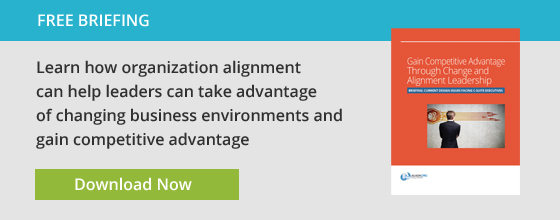Visit any business news site and you’ll find at least one article talking about “disruptors.” Uber has disrupted the urban transportation business. Airbnb has disrupted the hotel business. Amazon has disrupted the entire retail industry.
Any analyst will be happy to offer you his or her take on “the it factor” that made these dynamic upstarts capable of upsetting the biggest names in their industries. I believe we need to flip the conversation and talk about what those A-list organizations weren’t doing (or what they were doing poorly) that placed them in a position to be knocked off their perches.
When an organization reaches the top of its industry, it’s easy to become comfortable. That comfort often leads to complacency, and that’s dangerous territory.
The Dangers of Complacency
When complacency reigns, leaders stop asking questions like “What are we not fantastic at?” or “What are the gaps that a competitor could capitalize on?” They settle into a routine, a pattern, a certain way of doing things that nobody bothers to question. And why should they? Leaders might be thinking, “We’re doing the same things that got us to the top of the heap; clearly they’re working.”
Then a disruptor enters the scene, and everything changes. The flaws in “business as usual” become painfully obvious, and leaders begin scrambling to figure out how to fix them as quickly as possible.
Adopting a Competitor Mindset
When we work with clients who have made it to the top of their industries, we encourage them to consider questions like “If I were a competitor looking to exploit the biggest weakness in our organization, what would I focus on? Pricing structure? Customer service? Quality?” In other words, we challenge them to take on the mindset of a disruptor.
A word of caution: Once leaders begin having these conversations, there’s a strong temptation to focus on fixing the symptoms rather than challenging the underlying competitive assumptions upon which the business is based. Without getting to the foundational strategic assumptions, it’s impossible to challenge the organizational elements that reinforce the status quo and that could leave the organization open to threats from a disruptor. Rarely is the real issue a singular problem like poor customer service, declining quality, or uncompetitive pricing. More often than not, it’s a case of many organizational choices being misaligned, resulting in unmet customer needs.
Restoring Alignment
In our book Mastering the Cube, we talk about the six categories of choices — or organization systems — that an organization must align with its strategy if it is to succeed: (1) work processes, (2) structure and governance, (3) information and metrics, (4) people and rewards, (5) continuous improvement, and (6) leadership and culture. If or when any one of these systems falls out of alignment with strategy, it’s like twisting one of the rows in a Rubik’s cube, affecting the alignment of other areas as well. And that’s where many disruptors find their opportunity to strike.
The most successful organizations are constantly engaged in a process of aligning and re-aligning each of their organization systems with their strategies. They have, as we like to call it, an ongoing cadence of organizational renewal that involves two key concepts:
- Regularly reviewing the organization’s performance in the context of the marketplace
- Being ready, willing, and able to make changes as soon as it becomes clear that an organizational choice is not working well or is under threat from a disruptor
By promptly addressing any misalignments that could offer competitors an edge, organizations can not only lessen their chances of being “disrupted,” but also continue to generate sustainable enhancements to organizational performance.

